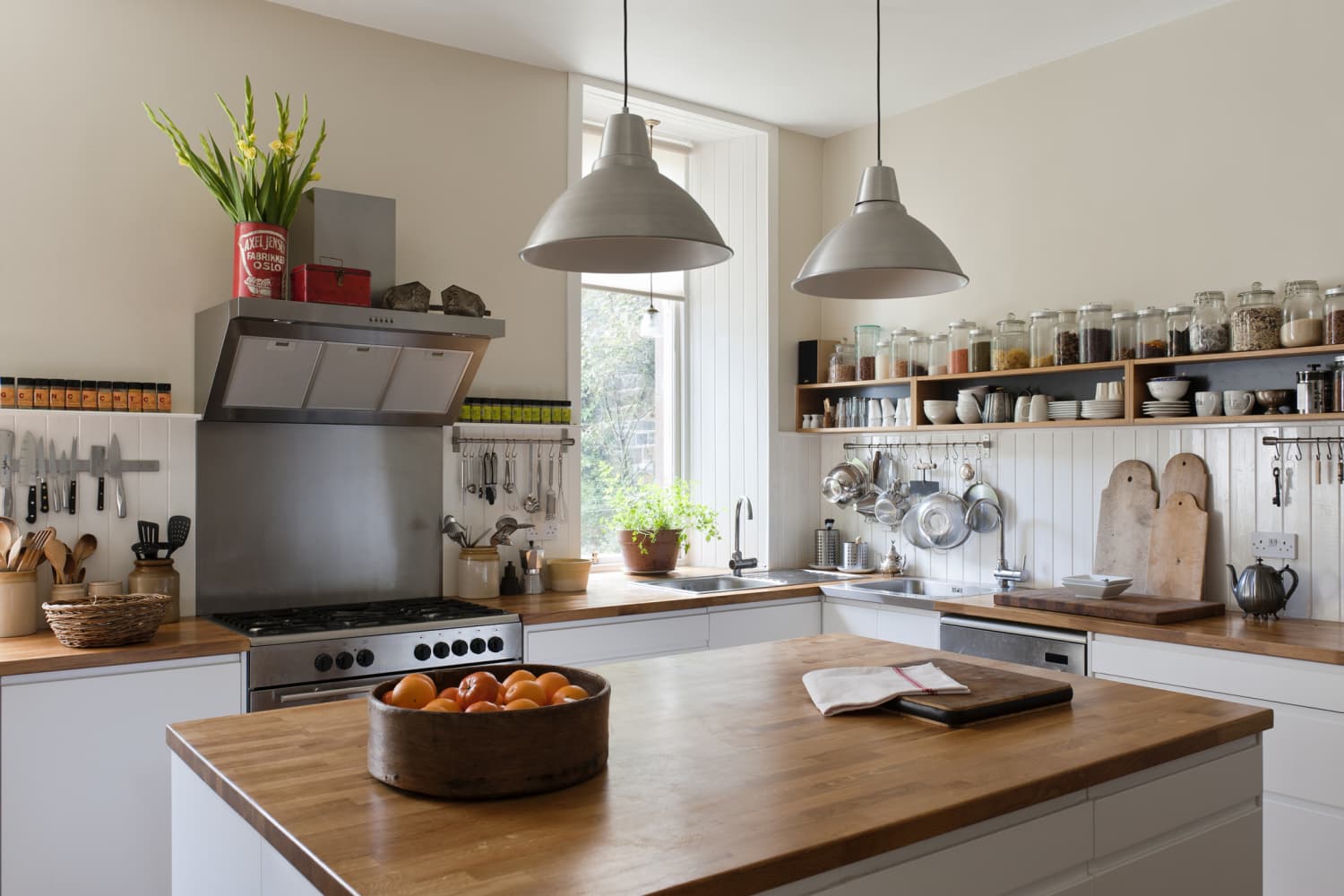8 Clever Tips for Storing Small Appliances, According to Pro Organizers | KitchnKitchnApartment TherapyKitchnCubby

Now more than ever, we’re relying on the wizardry of gadgets to help us get dinner (and breakfast! And lunch! And snacks!) on the table. Whether we’re talking about your Instant Pot, air fryer, toaster oven, blender, or even that new, cute waffle maker, there is a lot for home cooks to love about small appliances.
But no matter how useful and fun they are, they can take up lots of space. They don’t always fit neatly in cupboards and cabinets, and the situation can get even trickier if you have limited counter space. That’s where this story comes in. We turned to two pro organizers to get their tricks for wrangling small appliances. Here’s what they had to suggest.
Related: The Very Best Small Appliances You Can Buy in 2022
1. Follow the “once a week” rule.
Should that appliance go on the counter or should it get tucked away? According to Liz Bremer, a professional organizer and the owner of Put it Simply Organizing, there’s an easy way to make the call. “If you use it more than once a week, it can go on the counter. If not, store it away,” she says. In other words: It’s worth sacrificing the countertop real estate for your air fryer if you rely on it for dinner each night. (At least, it’s less of a hassle than hauling it in and out of your cabinets every evening.)
Related: 12 Cooks — Including Drew Barrymore — on Why They Love Their Air Fryer
2. Store the heavy stuff down low.
Sharon Lowenheim, a pro organizer and owner of Organizing Goddess, shares a crucial rule for organization and safety: “Heavy appliances should always go in a bottom cabinet, as you don’t want to be lifting something heavy over your head.” That means on top of your fridge is not a great place for your stand mixer!
3. Make use of your corner cabinet.
A corner cabinet, with or without a built-in lazy Susan, is the ideal spot for storing appliances. Bremer notes that its odd, cavernous depth is perfect for these bulky, awkward-shaped tools. Make the swap, and you’ll see how convenient it is to have everything stored in one place.
4. Outsource to the laundry room.
If there’s not enough space in your kitchen, think outside of the box … and into the laundry room. Bremer notes that some of her clients have found this underutilized room to be a perfect spot for kitchen overflow. As a bonus, it’s relatively easy to install inexpensive shelving in a laundry or mudroom for all of those gadgets.
5. Invest in a baker’s rack.
If you prefer to keep your appliances closer to where the action happens, take a page from Lowenheim’s playbook and pick up a baker’s rack. These standalone units have multiple shelves for organization — some even have special places for microwaves. If you’re debating where in the kitchen to situate it, keep this tip in mind from Lowenheim: “Preferably the rack would stand against a wall with an outlet so that you can keep your frequently used appliances plugged in and ready to use,” she says.
Related: 11 Smart Tips You Need to Know About Cleaning Your Air Fryer, According to Cookbook Authors
6. Get your cords under control.
Appliances rely on electricity to do their cooking magic — and that can result in a tangle of cords on your countertop. Bremer recommends managing the mess by wrapping them up neatly. Not only will this keep your workspace uncluttered, but it will also save the cords from drowning in spills and food mess. Lowenheim recommends using easy cord wraps. She also suggests rearranging countertops so that heavily used appliances live directly next to the outlets. That way, you can eliminate cords that snake all over the place.
Related: The $4 Hair Accessory That Helps Keep My Kitchen in Order
7. Corral the accessories.
Attachments, spare parts, and owner’s manuals — these are the fiddly bits that float around the house, turning up everywhere except when they’re really needed. Take control by using Bremer’s rule: Keep each appliance’s accessories in a zip-top bag or plastic container. Lowenheim suggests using quart-sized bags for the parts and gallon-sized bags for the larger stuff (such as KitchenAid attachments). And both agree: Don’t forget to label the container.
8. Consider downsizing.
Does it make sense to swap out countertop appliances with the seasons? We asked and Bremer is skeptical. “If you have that many appliances, it might be time to downsize,” she advises, especially if you are tight on storage space. Go through your stash of gadgets and decide which ones you truly use. Lowenheim points out that it’s easy to get caught up in the latest and greatest, but appliances are only useful if you actually use them. Also, maybe you can get by with a few versatile appliances that do more than one thing. For example, maybe you can ditch your slow cooker in favor of your Instant Pot. Or you can get a toaster oven that’s also an air fryer.
How do you organize your small appliances? Tell us in the comments below.
Rochelle Bilow
Contributor
Rochelle Bilow is a graduate of the French Culinary Institute, and the former social media manager at Bon Appétit Magazine and Cooking Light Magazine. She has also worked as a cook on a small farm in Central New York, and a Michelin-starred restaurant in New York City. Her foodie romance novel, Ruby Spencer's Whisky Year, will be published in 2023. Connect with her @rochellebilow.
Get our best recipes, grocery finds, and clever kitchen tips delivered to your inbox.
Comments
Post a Comment